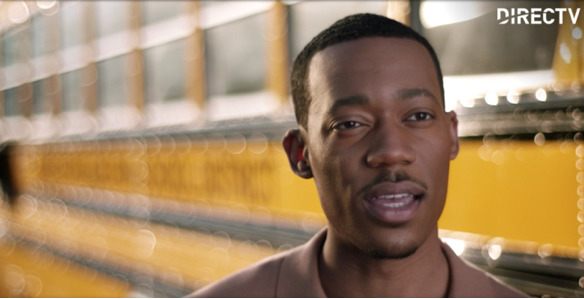Since the morning bell first sounded at ABC’s Emmy-nominated comedy Abbott Elementary, much has been written about the show’s revival of the mockumentary style. A mixture of zoom lenses, specific blocking, and camera movements help bring the format to life among the boisterous, chaotic energy of an elementary school in Philadelphia.

Abbott Elementary shares the stories of its titular school through both classroom life, and, of course, interviews. But as the Abbott Elementary teachers reflected in their conversations, my spidey senses tingled: This was no ordinary broadcast mock-documentary interview. Delicious and beautiful bokeh with unique character, all indicative of…could it be…vintage glass? A different bell went off: the start of a PVC scavenger hunt. What is delivering all that beautiful bokeh? Was it old glass like I suspected? And why did the director and cinematographer choose to use that kind of glass?
Lucky for us, director Randall Einhorn and cinematographer Kurt Jones jumped in with answers.

First off, yes: it is vintage glass!
Spidey senses are vindicated (get it?). To confirm my suspicions, I hopped on a call with Director Randall Einhorn (Abbott Elementary, The Office, It’s Always Sunny in Philadelphia) who turned the tables almost immediately: “How about a guess?” (I declined due to potential embarrassment and also, quite frankly, sheer surprise).
The answer: The Abbott Elementary interviews were shot on the exceptionally fast Panavision Ultra Speed 50mm T1.0 (https://www.panavision.com/camera-and-optics/product-detail/us-ultra-speed)

Using a “shallow depth to mirror emotions” goes back to Randall Einhorn’s work on FX’s Wilfred. Einhorn used old Nikkor glass and worked with shallow depths of fields to “mirror the character’s dementia,” Einhorn explained. “We used some older 50mm 1.2 Nikon glass wide open for certain sequences, so I knew Randall liked that feel,” Kurt Jones, cinematographer for both Abbott Elementary’s pilot and Wilfred, shared by email.
In Abbott Elementary, Einhorn and his team framed up interviews with the vintage glass to render “a warmer look,” while framed tight.
“They were built in the 70’s so it’s fast vintage glass,” adds Jones. “With very wide apertures, they would give us a creamy, smooth bokeh and take the edge off the digital feel.”
On Framing Up Heroes:
In the last episode of Season 1 of Abbott Elementary, the 2022 Breakfast Club receive an assignment to write about their favorite superhero. Before it gets tossed in the trash, we’re treated to the following reveal: “Our real heroes are our teachers.” It’s a theme that Einhorn took to heart as he considered framing the interviews in Abbott: the set up is designed for the characters to look like heroes and be the “absolute focus of the conversation.” To that end, the teachers are framed with laterals and diagonals in mind, drawing our eye to the character and using planes to our advantage. “I think in 9ths and 12ths,” Einhorn explains, as opposed to thirds. As Jones adds, “For the interviews, I felt they should feel different to make them stand out visually,” which of course, is why we’re here in the first place!
On Storytelling through Lens Choices
While eagle eyes may have spotted the interesting interview lens choice, there is an additional special secret moment at the end of the series that truly adds “emotion through the lenses,” as Einhorn describes. While on the bus, at the end of Abbott Elementary’s trip to the zoo, the 50mm is used for the first and only time in a “reality situation,” meaning it’s the only time the prime lens is used in what would normally be captured by the zooms in mockumentary style. It is very fitting for the season to “go out with that emotional moment” and provides a satisfying visual element that calls back to Jeanine’s reflections all season long, with the same lens used in the interview segments.

